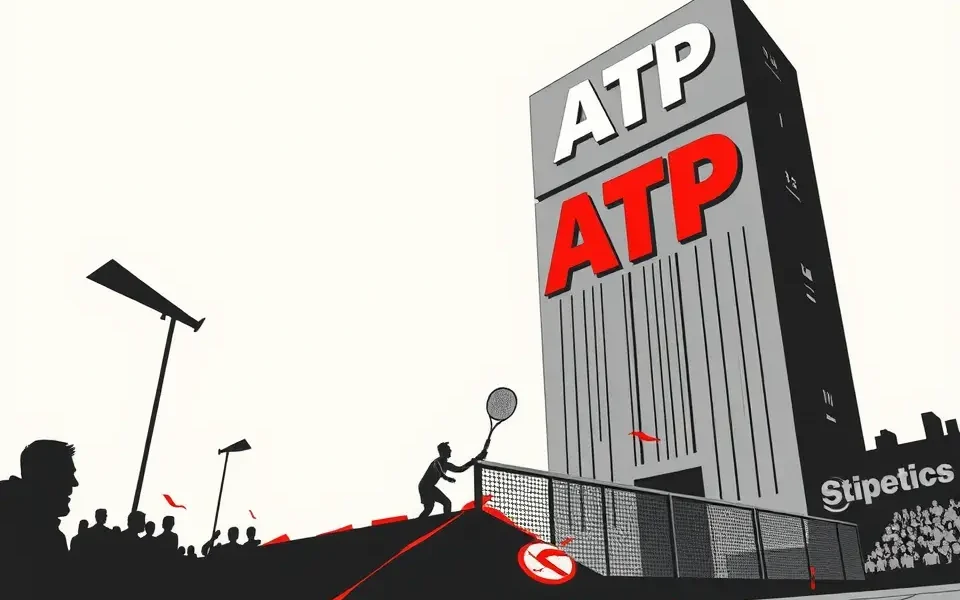Carlos Alcaraz, the young tennis sensation, hasn’t shied away from voicing his concerns over recent changes implemented by the ATP (Association of Tennis Professionals) in the Masters 1000 tournaments. These modifications, primarily focused on scheduling and rules, have sparked debate among players, with Alcaraz joining the chorus of those expressing reservations.
The Heart of the Matter: What’s Changed?
The central point of contention revolves around the ATP’s decision to extend seven of the nine Masters 1000 events to a two-week format beginning in 2025 . Previously, these tournaments were condensed into a single week. The rationale behind the extension is to increase broadcast and ticket revenues by creating longer-lasting events . However, many players, including Alcaraz, believe that this change comes at the expense of player well-being and the overall quality of the competition .
Alcaraz’s Concerns: Rushed Play and Recovery
Alcaraz has been particularly vocal about the impact of the new rules on players’ routines and recovery time. In June 2024, during the Queen’s Club Championships, he criticized a new shot clock regulation being trialed . This rule change involved starting the 25-second countdown as soon as a point ended, rather than waiting for the umpire to call the score . Alcaraz felt this rushed him between points, disrupting his pre-serve routine and preventing him from adequately preparing for each serve .
“He told me that there is a new rule, this new thing, that the clock never stops. After the point is finished, the clock is putting on,” Alcaraz explained . “I think for the players, it’s something bad. I finish the point at the net, and I had no time to ask for balls. I’m not saying to go to a towel and take my time. I feel like I can’t ask for the balls .”
He continued, “It’s crazy. I have time just to ask for two balls and no bounces. I’ve never seen something like that in tennis .” Alcaraz emphasized the importance of having enough time to recover and go through his routine, stating, “If you play a long point or finish at the net, you have time just to go for a towel or ask for your routine, ask for, in my case, four balls .”
Echoes of Discontent: Other Players Weigh In
Alcaraz isn’t alone in his criticism. Stefanos Tsitsipas has also voiced concerns about the extended Masters 1000 format, suggesting that it reduces the quality of play due to insufficient time for rest and intensive preparation . Tsitsipas pointed to the Paris Masters, completed within a week, as a more exciting and manageable event .
Alexander Zverev echoed similar sentiments, highlighting the increased risk of injuries and lack of adequate rest . He noted that while the extended format might benefit lower-ranked players by providing more opportunities, it’s not suitable for top players who face a more demanding schedule .
A Clash of Perspectives: Benefits vs. Drawbacks
The ATP’s decision to extend the Masters 1000 events has sparked a debate about prioritizing financial interests versus player well-being . While the extended format undoubtedly increases revenue through broadcast rights and ticket sales , it also places a significant strain on players .
Potential Benefits:
- Increased Opportunities for Lower-Ranked Players: The extended format provides more opportunities for lower-ranked players to participate in these prestigious tournaments, potentially earning valuable ranking points and prize money .
- Enhanced Fan Experience: Longer tournaments can attract more spectators and create a more engaging experience for fans .
- Greater Revenue for Tournament Organizers and the ATP: The extended format generates more revenue through broadcast rights, ticket sales, and sponsorships, which can be reinvested in the sport .
Potential Drawbacks:
- Increased Risk of Injuries and Burnout: The demanding schedule, with back-to-back matches and limited recovery time, increases the risk of injuries and burnout, particularly for top players who are expected to compete in numerous tournaments throughout the year .
- Reduced Quality of Play: Insufficient rest and preparation time can lead to fatigue and a decline in the quality of play .
- Disruption of Player Routines: The new shot clock rule and other changes can disrupt players’ routines and negatively impact their performance .
Alcaraz’s Triumph in Monte Carlo: A Statement on the Court
Despite his concerns about the ATP’s changes, Alcaraz has continued to perform at a high level. Most recently, he secured his sixth ATP Masters 1000 title at the Monte Carlo Masters, defeating Lorenzo Musetti in the final . This victory marked his first title in Monte Carlo and silenced critics who had questioned his form following a loss at the Miami Open .
Alcaraz’s win in Monte Carlo demonstrates his resilience and determination to succeed despite the challenges posed by the demanding tennis schedule and the controversial rule changes. In a press conference after his victory, Alcaraz emphasized his commitment to enjoying the game and eschewing the burden of expectations .
The Path Forward: Finding a Balance
The ongoing debate surrounding the ATP’s changes highlights the need for a balanced approach that considers both the financial interests of the sport and the well-being of the players. As Alcaraz and other players continue to voice their concerns, the ATP has an opportunity to engage in constructive dialogue and find solutions that address the challenges posed by the extended Masters 1000 format and other rule changes .
Potential solutions could include:
- Adjusting the Tournament Schedule: Spreading out the Masters 1000 events more evenly throughout the year to allow for more rest and recovery time between tournaments .
- Modifying the Shot Clock Rule: Re-evaluating the shot clock rule to ensure that players have sufficient time to prepare for their serves without unduly slowing down the pace of play .
- Providing More Support for Player Health and Well-being: Investing in resources and programs that support player health and well-being, such as access to medical care, training facilities, and mental health services .
- Seeking Input from Players: Actively soliciting feedback from players on proposed rule changes and scheduling modifications to ensure that their concerns are taken into account .
By working together, the ATP and the players can create a more sustainable and equitable environment for the sport, ensuring that tennis remains a thrilling and competitive spectacle for fans while also prioritizing the health and well-being of its athletes. Alcaraz’s willingness to speak out on these issues is a positive step towards achieving this goal.








No Comment! Be the first one.